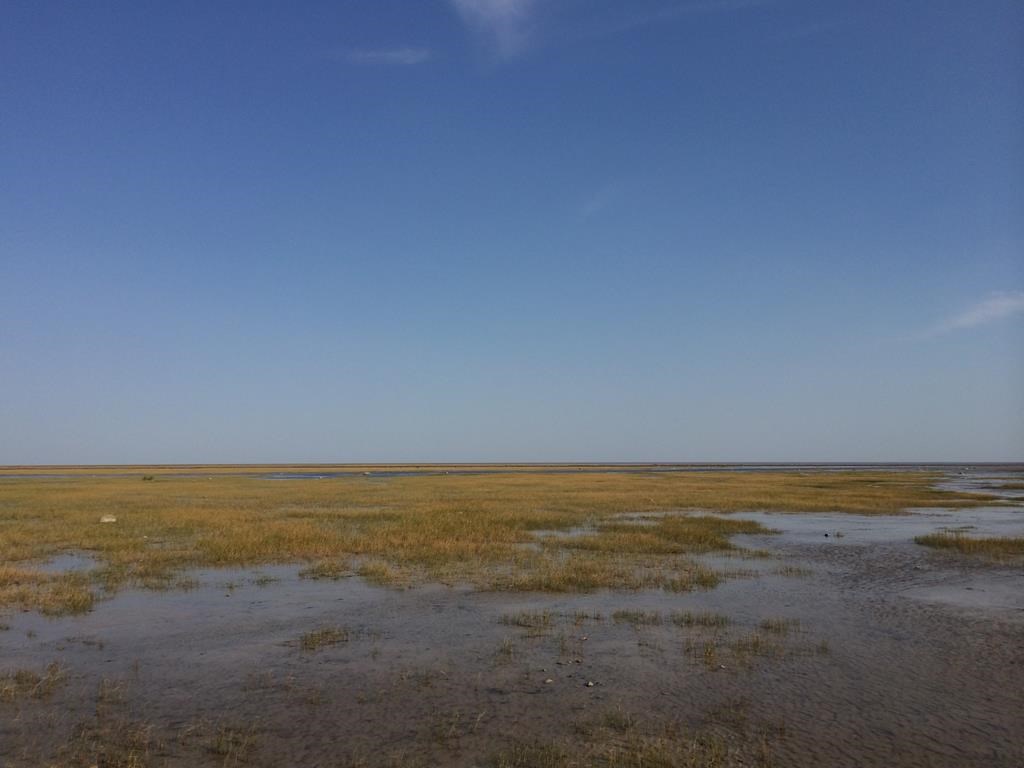A vast marine area off Ontario’s north shores that’s home to beluga whales and threatened polar bears could soon be protected, officials said Wednesday, as First Nations welcomed what was seen as a key step towards fulfilling a longstanding treaty promise.
The federal government and nine First Nations said they have cleared a hurdle on the path to protecting a stretch of southern Hudson Bay and western James Bay as a national marine conservation area.
After studying the feasibility of the project, representatives for both Ottawa and the First Nations said they support the idea and are moving ahead with negotiations.
Grand Chief Leo Friday of the Mushkegowuk Council called it an important first step toward recognizing First Nations as the stewards of their traditional lands and waters.
“Those are the things that we believe our forefathers were told that we are trying to fulfil,” he said in an interview ahead of Wednesday’s announcement.
The proposal would see Parks Canada and the First Nations work toward a co-governance model protecting a roughly 86,000-square-kilometre marine area, slightly larger than Lake Superior, and ensuring First Nations rights to fish, hunt and trap.
The Mushkegowuk Council has long pushed for the protection of the lowlands and marine ecosystems of Hudson Bay and James Bay, what’s known to Omushkego people as Washabeyoh and Weeneebeg.
“Right now, we’re just borrowing the tools from the Europeans,” said Grand Chief Friday, referring to the federal conservation designation.
The federal government pledged in 2021 to add 10 marine conservation areas over five years, doubling its current total, as part of a key biodiversity target to protect 30 per cent of lands and waters in Canada by 2030.
With this project the furthest along of seven active marine conservation proposals across the country, Environment Minister Steven Guilbeault said he remains confident in the government’s ability to hit its targets.
“Our best ally to fight climate change is nature,” he said. “So, the more we can invest in nature protection, the more we can enhance the capacity of our ecosystems to withstand the impacts of climate change.”
Marine conservation areas generally prohibit any oil, gas or mineral exploration and mining. They also put strict limits on ocean disposal and other activities, such as bottom-trawling fishing gear.
The area under consideration is home to some of the largest beluga populations in the world and the most southerly population of polar bears. It’s also a hotspot for migratory birds.
Parks Canada spokesperson Caroline Macintosh called Wednesday’s announcement a “significant milestone.”
“(It) speaks to the hard work done by the Omushkego people to protect this area. And it sets the stage for us to work together to really put this under protection in a permanent way for future generations,” said Macintosh, executive director for protected areas establishment.
A committee with representation from the Mushkegowuk Council and Parks Canada recommended a two-phased approach to establish the conservation area. The council, representing seven First Nations, is joined on the project by the First Nations of Weenusk and Fort Severn.
The first phase would get protection for the offshore marine area under federal jurisdiction. A second phase would seek to protect intertidal zones and up to 20 kilometres inland from the coast that’s under provincial jurisdiction.
Guilbeault said there have been “many, many” attempts to reach out to the province on the project.
“I would, unfortunately … qualify it as a lack of interest,” he said.
He said the “door is still open” to the province, noting the federal government didn’t need but would welcome its involvement in the marine protection area.
“And, certainly, for terrestrial projects, we need their involvement. They need to be at the table. And, right now, when it comes to northern Ontario, they haven’t shown a great level of interest,” Guilbeault said in an interview ahead of the announcement.
Ontario’s Ministry of the Environment, Conservation and Parks said the province “has not participated in detailed discussions with Parks Canada nor Environment and Climate Change Canada due to national marine conservation areas falling under the jurisdiction of the federal government.”
Chiefs of the Mushkegowuk Council issued a call in 2021 for a moratorium on development activities in the mineral-rich Ring of Fire area in northern Ontario until sensitive wetlands and watersheds were protected. The Hudson Bay lowlands are one of the largest intact peatland complexes in the world, storing an estimated 30 to 35 billion tonnes of carbon.
Offshore, tens of thousands of belugas migrate to Hudson Bay and James Bay from the Arctic every summer, gathering around estuaries such as the Severn and Winisk Rivers in northern Ontario to feed on fish runs.
Independent scientific reports say the beluga populations covered by the proposed conservation area are robust, but rapid climate change is leading to new threats. Reduction of sea ice is giving ships unprecedented access to the Arctic and sub-Arctic, bringing more noise disturbance and chemical exposure, along with greater risk of oil spills, said a recent assessment by the Committee on the Status of Endangered Wildlife.
The survival of polar bears in southern Hudson Bay and James Bay is also threatened by rapid Arctic warming, cutting into the time they can spend hunting on retreating sea ice.
This report by The Canadian Press was first published Feb. 21, 2024.


